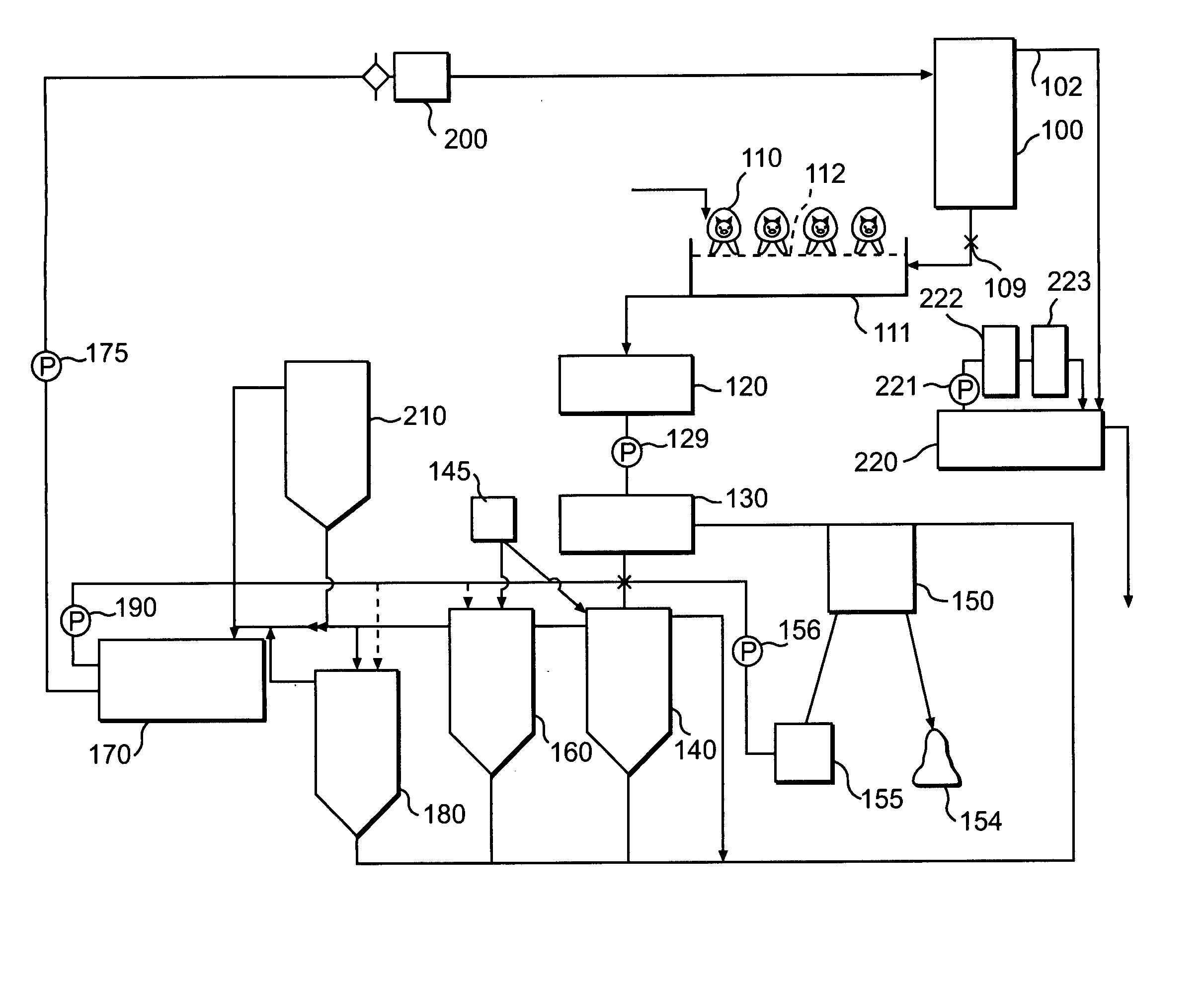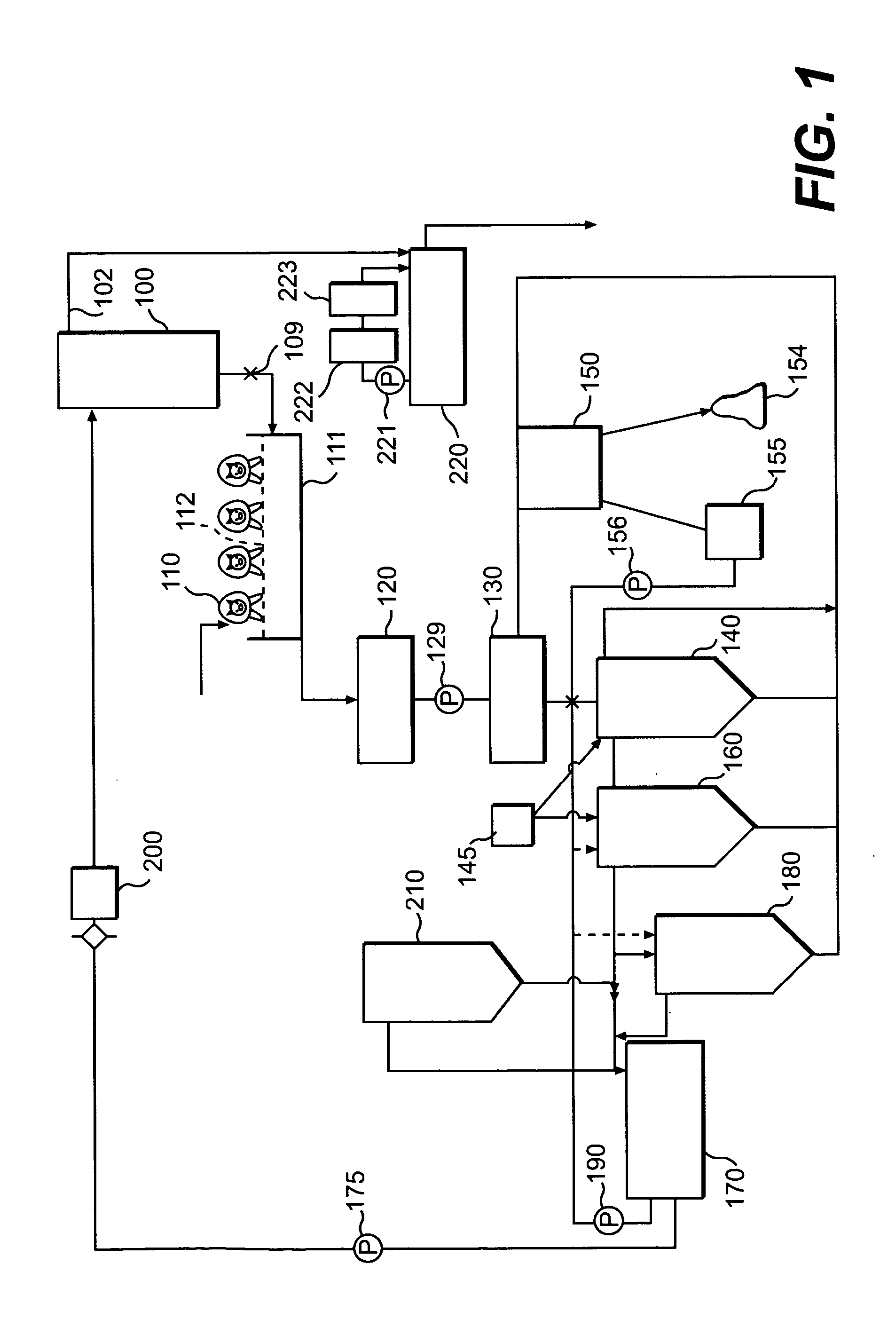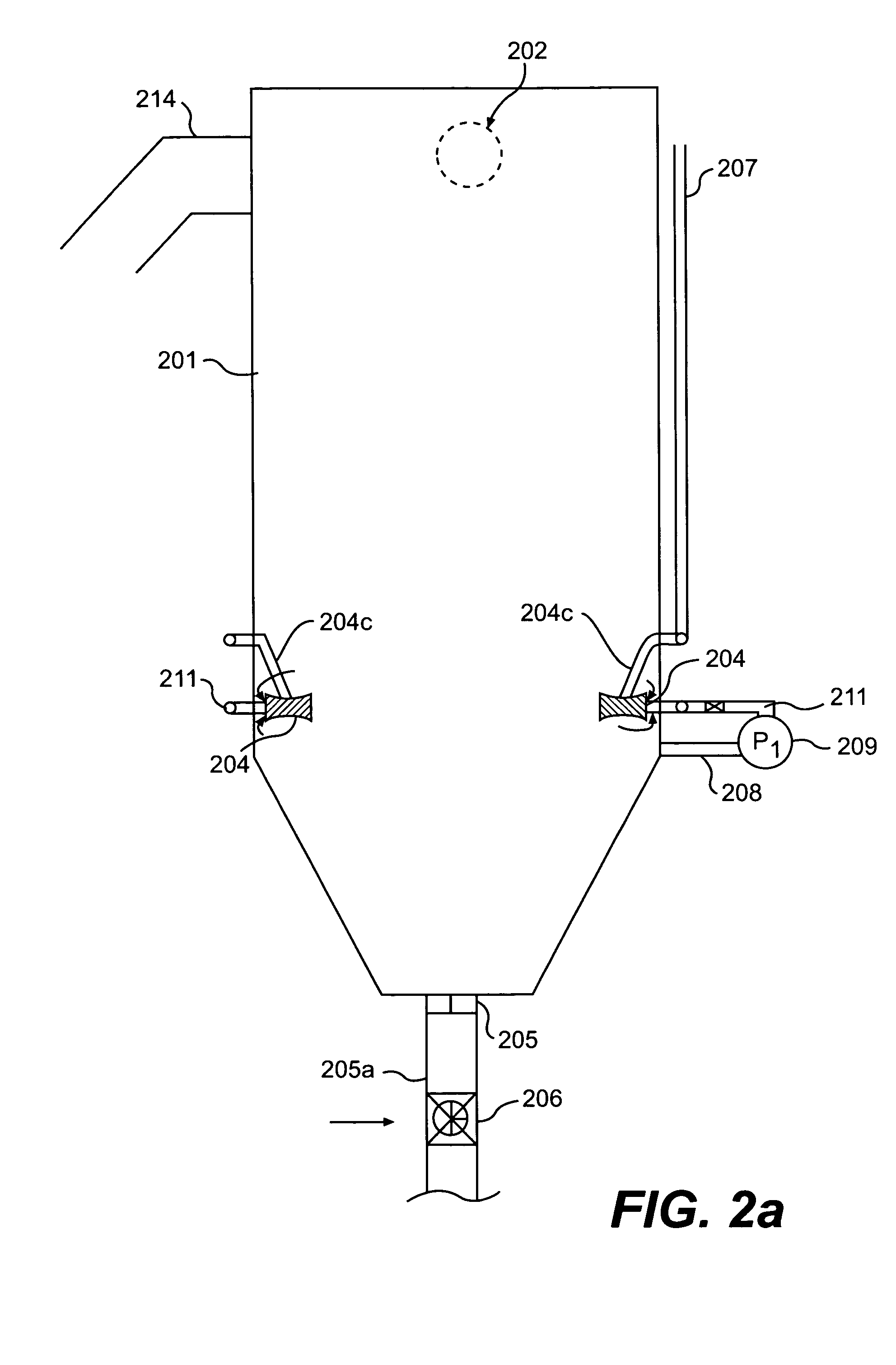Waste water treatment system and process
a technology of waste water treatment system and process, applied in the direction of biological water/sewage treatment, multi-stage water/sewage treatment, sustainable biological treatment, etc., can solve the problems of human and animal harm, contamination levels, and waste water runoff from animal farms, so as to reduce the amount of contaminants released, promote the health and growth of organisms, and reduce the effect of odor problems
- Summary
- Abstract
- Description
- Claims
- Application Information
AI Technical Summary
Benefits of technology
Problems solved by technology
Method used
Image
Examples
example
Amount of Gas Introduced into Liquid in an FFS
[0120] In an FFS employing two mixing eductor air jets, each eductor has a neck region sized to connect with a 1 inch diameter pipe which provides the flow of water through inlet 204a. The jets are powered by a 2 HP centrifuge pool pump, which provides 25 PSI of pressure and results in a flow rate of 33 GPM through each jet and 4 to 7 SCFM of gas introduced into the FFS for each jet.
[0121] A more detailed description of the denitration system 180, discussed above in the description of FIG. 1, will now be provided. The various embodiments of the denitration systems which will now be described are known as Nitrafix systems. Additional description of the Nitrafix systems developed by the inventor of the present invention can be found in co-pending application Ser. No. 10 / 673,634, filed Sep. 30, 2003, and entitled AUTOTROFIC SULFUR DENITRATION CHAMBER AND CALCIUM REACTOR, and co-pending Continuation-In-Part Application, Attorney Docket No....
PUM
 Login to View More
Login to View More Abstract
Description
Claims
Application Information
 Login to View More
Login to View More - R&D
- Intellectual Property
- Life Sciences
- Materials
- Tech Scout
- Unparalleled Data Quality
- Higher Quality Content
- 60% Fewer Hallucinations
Browse by: Latest US Patents, China's latest patents, Technical Efficacy Thesaurus, Application Domain, Technology Topic, Popular Technical Reports.
© 2025 PatSnap. All rights reserved.Legal|Privacy policy|Modern Slavery Act Transparency Statement|Sitemap|About US| Contact US: help@patsnap.com



